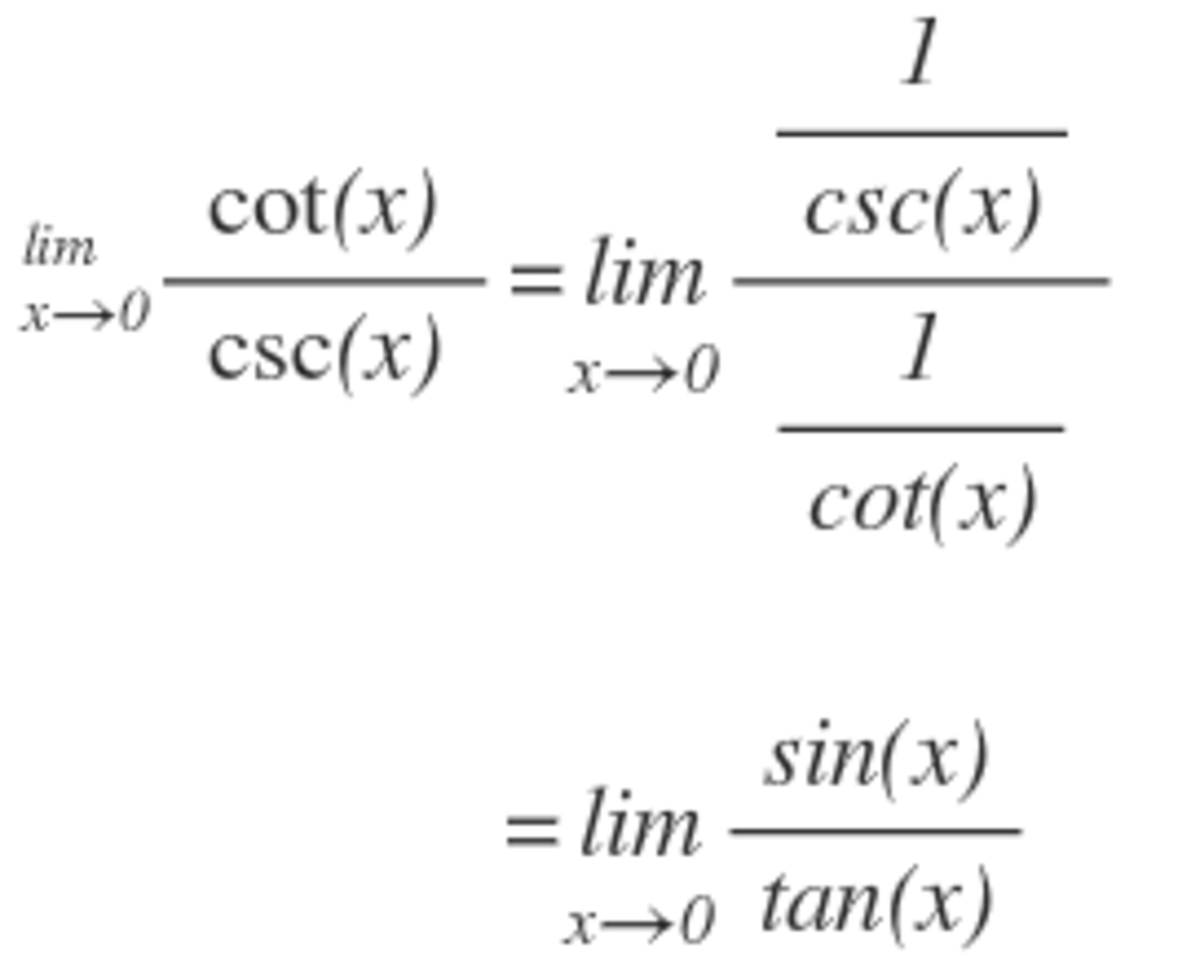Infinite L'Hôpital's Rule!
Please help me! I kept using L'Hôpital's rule millions of times and I can't evaluate the limit below!
x → 0 lim csc x cot x = ?
Details and Assumptions:
- d x d ( cot x ) = − csc 2 x
- d x d ( csc x ) = − csc x cot x
The answer is 1.
This section requires Javascript.
You are seeing this because something didn't load right. We suggest you, (a) try
refreshing the page, (b) enabling javascript if it is disabled on your browser and,
finally, (c)
loading the
non-javascript version of this page
. We're sorry about the hassle.
16 solutions
yes, same with me. no need l'hopital rule :)
@Pi Han Goh Congratulations on reaching 1000 followers! You deserve it, and keep going for the next thousand!
Log in to reply
 43242
43242
Neat Solution using simple trig functions
same as i did
I don't even know what L'Hospital's Rule, but I used Trevor's method.
Log in to reply
@Sharky Kesa If you know derivatives for calculus, if you have an indeterminate form in the limit of a fraction g ( x ) f ( x ) at a number k that results in ∞ ∞ or 0 0 , then x → k lim g ( x ) f ( x ) = x → k lim g ′ ( x ) f ′ ( x )
If one insists on using L'Hôpital's Rule,
Let L = x → 0 lim csc ( x ) cot ( x ) = x → 0 lim cot ( x ) csc ( x ) (using L' Hospital Rule)
⟹ L = L 1
⟹
L
=
±
1
⟹
L
=
1
(
−
1
is rejected since the ratio
csc
(
x
)
cot
(
x
)
is positive near
0
)
That's innovative!
It's L^2=1 and L=+1 or -1 If L^2=-1, then L becomes imaginary.
same as you
I had the same solution but that does not yet quality as a proof because it is unvertain if the limit exists. (Of course question implies it does.)
Why to do la hospital
lim x → 0 csc x cot x = lim x → 0 sin x 1 sin x cos x = lim x → 0 cos x = 1
No need to apply L-Hospital's. Simplify the expression by converting into sine and cosine to get l i m x → 0 c o s x to get answer 1
I put absolutley no thought into this and just typed 1 and it was correct
x → 0 lim csc ( x ) cot ( x ) = x → 0 lim sin ( x ) cos ( x ) ÷ sin ( x ) 1 = x → 0 lim cos ( x ) = cos ( 0 ) = 1
ha ha ha very funny ..:) "Please help me! I kept using L'Hôpital's rule millions of times and I can't evaluate the limit!" love your humor.. cot x / cosec x = cosx...lim x>0 cos x = 1
just simplify the trig ratio to be cos(x) , then the value of cos(0) is 1
Why are you keep on doing the lazy solution. this is actually the solution. lol hahaha
cot(x) = cos(x)/sin(x) csc(x) = sin (x)
cot(x)/csc(x) = cos(x)
limit as x->0 is 1. lol
I think you do not need to use L'Hopital rule
You just evaluate by manipulating it: limit(((cot(x))/(csc(x)))= limit(((((cos(x))/(sin(x))))/(((1)/(sin(x)))))= limit(((cos(x))/(sin(x)))·sin(x)= limit(cos(x)=1,x,0),x,0),x,0),x,0)
cot(x)/csc(x) = sin(x)/tan(x) now use L' Hospital's rule
Cotx= cosx/sinx ; cosecx = 1/sinx ; thus cosx/cosecx=cosx as x-> 0 means x is not equal to 0 . Thus lim(x->0)cosx = 1
You can convert cot and cosec into sin and cos then only cos(x) will remain and cos (0) is 1
Pretty neat explanation
Multiply and divide the given limit with x. And then use the taylor expansion for x cot(x) and x cosec (x) and then substitute x=0 to get the answer, that is 1
a round of applause to this guy^
The solution was a joke...the problem was so easy that I wanted to give a little complex soln!!
If you wanted to solve the above limit problem by only using L'Hospital rule,You have to little bit manipulate the function as follows
 Now apply L'Hospital rule
Now apply L'Hospital rule
x → 0 lim csc ( x ) cot ( x ) = x → 0 lim sin ( x ) 1 sin ( x ) cos ( x ) = x → 0 lim 1 cos ( x ) = cos ( 0 ) = 1